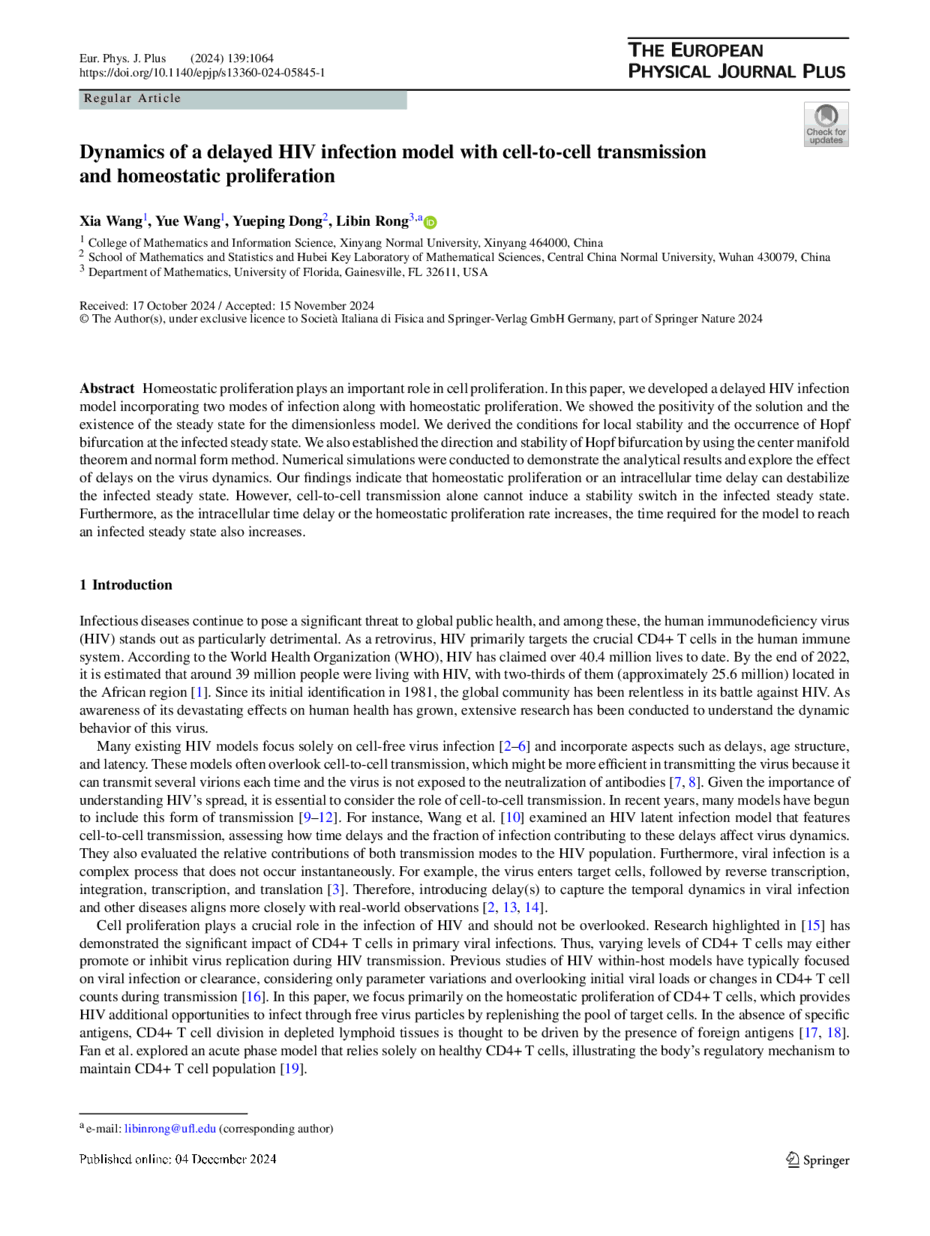https://doi.org/10.1140/epjp/s13360-024-05845-1
Regular Article
Dynamics of a delayed HIV infection model with cell-to-cell transmission and homeostatic proliferation
1
College of Mathematics and Information Science, Xinyang Normal University, 464000, Xinyang, China
2
School of Mathematics and Statistics and Hubei Key Laboratory of Mathematical Sciences, Central China Normal University, 430079, Wuhan, China
3
Department of Mathematics, University of Florida, 32611, Gainesville, FL, USA
Received:
17
October
2024
Accepted:
15
November
2024
Published online:
4
December
2024
Homeostatic proliferation plays an important role in cell proliferation. In this paper, we developed a delayed HIV infection model incorporating two modes of infection along with homeostatic proliferation. We showed the positivity of the solution and the existence of the steady state for the dimensionless model. We derived the conditions for local stability and the occurrence of Hopf bifurcation at the infected steady state. We also established the direction and stability of Hopf bifurcation by using the center manifold theorem and normal form method. Numerical simulations were conducted to demonstrate the analytical results and explore the effect of delays on the virus dynamics. Our findings indicate that homeostatic proliferation or an intracellular time delay can destabilize the infected steady state. However, cell-to-cell transmission alone cannot induce a stability switch in the infected steady state. Furthermore, as the intracellular time delay or the homeostatic proliferation rate increases, the time required for the model to reach an infected steady state also increases.
Copyright comment Springer Nature or its licensor (e.g. a society or other partner) holds exclusive rights to this article under a publishing agreement with the author(s) or other rightsholder(s); author self-archiving of the accepted manuscript version of this article is solely governed by the terms of such publishing agreement and applicable law.
© The Author(s), under exclusive licence to Società Italiana di Fisica and Springer-Verlag GmbH Germany, part of Springer Nature 2024
Springer Nature or its licensor (e.g. a society or other partner) holds exclusive rights to this article under a publishing agreement with the author(s) or other rightsholder(s); author self-archiving of the accepted manuscript version of this article is solely governed by the terms of such publishing agreement and applicable law.





